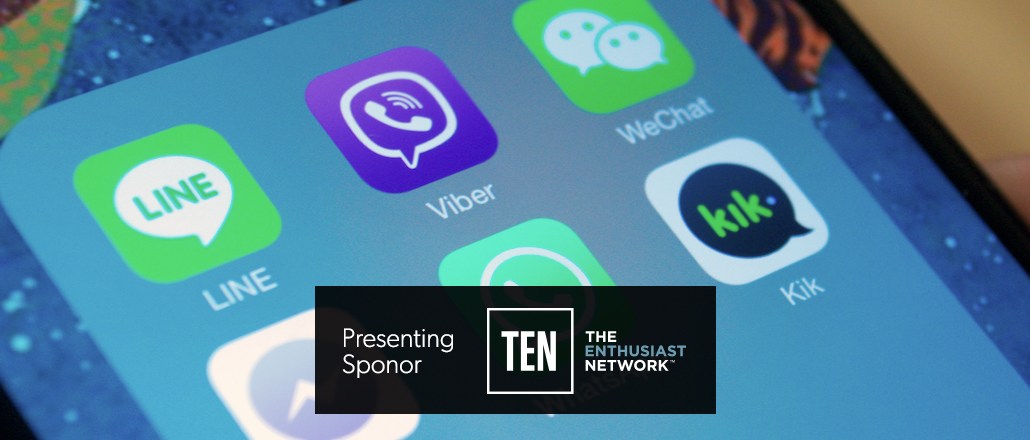
With 257 billion text messages sent every day, messaging apps have surpassed social networks, both in terms of active users and number of sessions. But even while the space presents a huge opportunity for marketers to engage with their audiences, it isn’t without its challenges.
Marketers from brands like Marriott, Coach and Cleveland Hustles, as well as technologists from Kik, Line and Emogi, met during Advertising Week in New York to describe their biggest challenges with messaging apps. Among the biggest challenges: lack of measurement standards, multiple platforms and lack of access to data.
The speakers, who addressed audiences on two separate panels Monday, also broadly discussed how marketers and technologists can effectively engage with mobile users on messaging apps like iMessage, Facebook Messenger, Kik and Line.
Here are some choice excerpts from the panels, some of which have been lightly edited:
Amanda Moore, senior director of social and digital marketing, Marriott
What we don’t want to do is introduce another mobile communication tool that doesn’t tie into our existing ones. So from the customer standpoint, you start the conversation on Messenger and then log into Marriott.com, where they have no idea what conversation you had on the chatbot. That’s been our biggest challenge: How do we connect all these tools to the guest profile and realize who prefers to talk to us on Facebook Messenger versus WeChat versus a mobile app. It is very important for us, at the end of the day, that the customer experience is not frustrating.
John Koetsier, mobile economist, Tune
The big question in all of this, as in every new opportunity for marketers, is who owns the connection between you and your customers and who owns the connection between you and your prospects. You’ve also got Facebook in there. Facebook has relationships with 3 million businesses in America — and they’re going to monetize the Messenger platform at some point. You’ve also got Kik and Line and others. And your access, to your customer, your prospects and your fans, they are going to extract some kind of value from that. There are also going to be other challenges in that, because you want a direct one-to-one relationship with your customers and your fans and you don’t want that mediated or intermediated. You don’t want it to be paid; you want it to be earned and owned.
Travis Montaque, CEO and founder, Emogi
We’ve been able to address a lot of the different challenges with respect to measurement and how that is transacted against. When you look at why advertising hasn’t been able to introduce the same kind of scale to messaging as they have to other channels, it’s because they don’t know how to compare it to a video buy. Or how to compare it to a display buy. How does a sticker or GIF execution compare with respect to my spend?
Bonin Bough, former chief media and e-commerce officer, Mondelēz and current host, Cleveland Hustles
What I hate about where we are as an industry is that we do this thing where there’s this shiny little object and everybody runs toward it: Chatbot, chatbot, chatbot! We’re stuck and we’re missing the whole other side of the spectrum about where the world really is. But coming from that world, I think the big challenge is that brands have become disintermediated from the actual data of the consumer. When you look the Unilever factor in purchasing a Dollar Shave Club, its direct one-to-one data access. The reason why NatureBox is a compelling play for a snack food company is data. The question is whether this next wave of messaging platforms will actually allow direct data access to brands.
Josh Jacobs, president of Kik services, Kik
Stickers, keyboards and emojis, there aren’t standards for this stuff. Quite frankly, some of the larger players getting into this space might make it easier for some of the other players to just say, “Fine, we’re calling this a sticker.” Because the bottom line is that if you need to grow in the market, there has to be both demand and supply, and those are fragmented right now.
Dana Randall, senior director of global innovation, Coach
When it comes to these channels, you can run rogue to some extent, but if you don’t have the support, marketing and other verticals within the business, it’s not going to succeed. For this to work, we need to be tied into our monthly product uploads and what the marketing message is. All these things have to be done with complete alignment. Also, from the infrastructural standpoint, you have to have your back-ends integrated so you can have a seamless send-off from one platform to the next.
More in Marketing

Agencies create specialist units to help marketers’ solve for AI search gatekeepers
Wpromote, Kepler and Jellyfish practices aim to illuminate impact of black box LLMs’ understanding of brands search and social efforts.

What AI startup Cluely gets — and ad tech forgets — about attention
Cluely launched a narrative before it launched a tool. And somehow, it’s working.

Ad Tech Briefing: Start-ups are now table stakes for the future of ad tech
Scaled ad tech companies need to maintain relationships with startups, when the sector is experiencing ongoing disruption due to AI.





